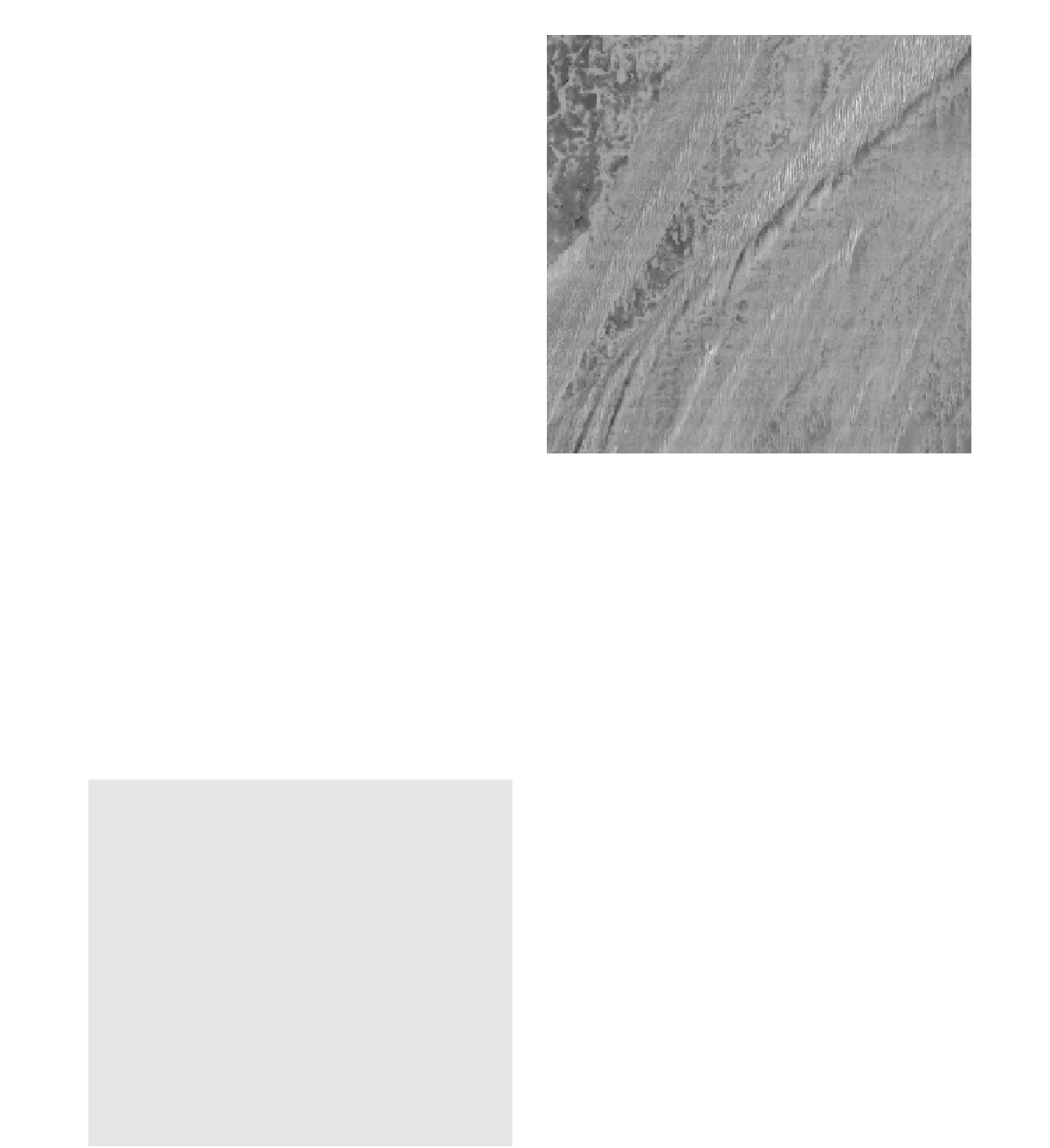Geoscience Reference
In-Depth Information
features (Pye and Sherwin, 1999). Loess is largely devoid
of landforms that are a direct result of shaping by the
wind; being comprised of fine-grained sediment, it is gen-
erally unable to hold a morphology once deposition from
suspension transport by the wind has occurred, other than
that determined by the underlying topography over which
it lies. Thus the great loess plateau of China and the loes-
sic deposits of eastern Europe and America are rather flat
and featureless. There are exceptions to this, and low and
high amplitude linear structures ('loess hills' and 'loess
dunes') have been reported from the loess deposits of
eastern Germany and Bulgaria. These are parallel to the
wind direction that was responsible for deposition (Leger,
1990). In Bulgaria, where the features are locally known
as 'breda', they are reported as having a wavelength of
300-1200 m and a trough-ridge amplitude of up to 40
m (Rozsycki, 1967). However, loess is very susceptible
to erosion by running water, especially, paradoxically, in
drier areas where vegetation cover is sparse, and most
landforms associated with the material are erosional in
nature, such as gullies, piping and features resulting from
landsliding and slumping (Derbyshire
et al.
, 1993).
The wider grain-size range of sand particles transported
by the wind (particle diameters from 2000 to 63 µm)
means that constructional aeolian forms - dunes and rip-
ples - can develop due to the packing that can occur
between particles of different sizes. Over 99 % of arid
zone aeolian sand deposits are found in extensive sand
seas or
ergs
(Wilson, 1973), the largest landform unit of
aeolian deposition (Table 17.1), within which smaller-
Figure 17.2
Bedform patterns revealed in a sand sea by satel-
lite imagery. Unravelling the complex evolution of such a sys-
tem requires scientific data at a range of temporal and spatial
scales.
scale depositonal landforms - predominantly dunes - oc-
cur. Independent, isolated, dunes can occur outside sand
seas, e.g. where aeolian sand supply is limited and a to-
pographic obstacle causes sand accumulation, but usu-
ally dunes occur in association with other dunes. This is
significant when dune-forming processes are considered
because it is increasingly being recognised that the in-
teractions that can occur between adjacent dunes, due to
self-organisation (Werner, 1995), are a key component of
explaining how dunes form. As such, the beautiful patterns
that exist within dunefields (Figure 17.2 and see Chapter
19), and which remote sensing from space has made so
visible, are not merely aesthetically pleasing but result
from the processes of organisation that occur in complex
environmental systems (Ewing, Kocurek and Lake, 2006;
Baas, 2007).
The form and size of dunes can vary within and be-
tween sand seas, through the interaction of and varia-
tions in sand supply, vegetation cover and wind regime.
While there may be spatial variability through a dunefield
in dune size, statistical analyses tend to show that pat-
terns are consistent over quite large areas of 10
1
-10
2
km
2
(e.g. Thomas, 1986; Bullard
et al.
, 1996), resulting from
self-organisational principles (Ewing, Kocurek and Lake,
2006; Zheng, Bo and Zhu, 2009). Over time, patterns may
mature and multiple patterns may become superimposed
Table 17.1
Scales of aeolian depositional landforms.
Name
a
Scale
Description
I
Deposits of regional
extent
Sand seas or ergs
II
Deposits commonly
devoid of scale III
bedforms
Sand sheets, streaks
and stringers
IIIa
Bedforms
superimposed on
scale I deposits
Complex, compound
and megadunes
IIIb
As scale IIIa or
independently
Simple dunes
IV
Bedforms
superimposed on
scale I, II or III
deposits
Normal, fluid drag and
megaripples
a
Many deposits have alternative names. These are given in the table




